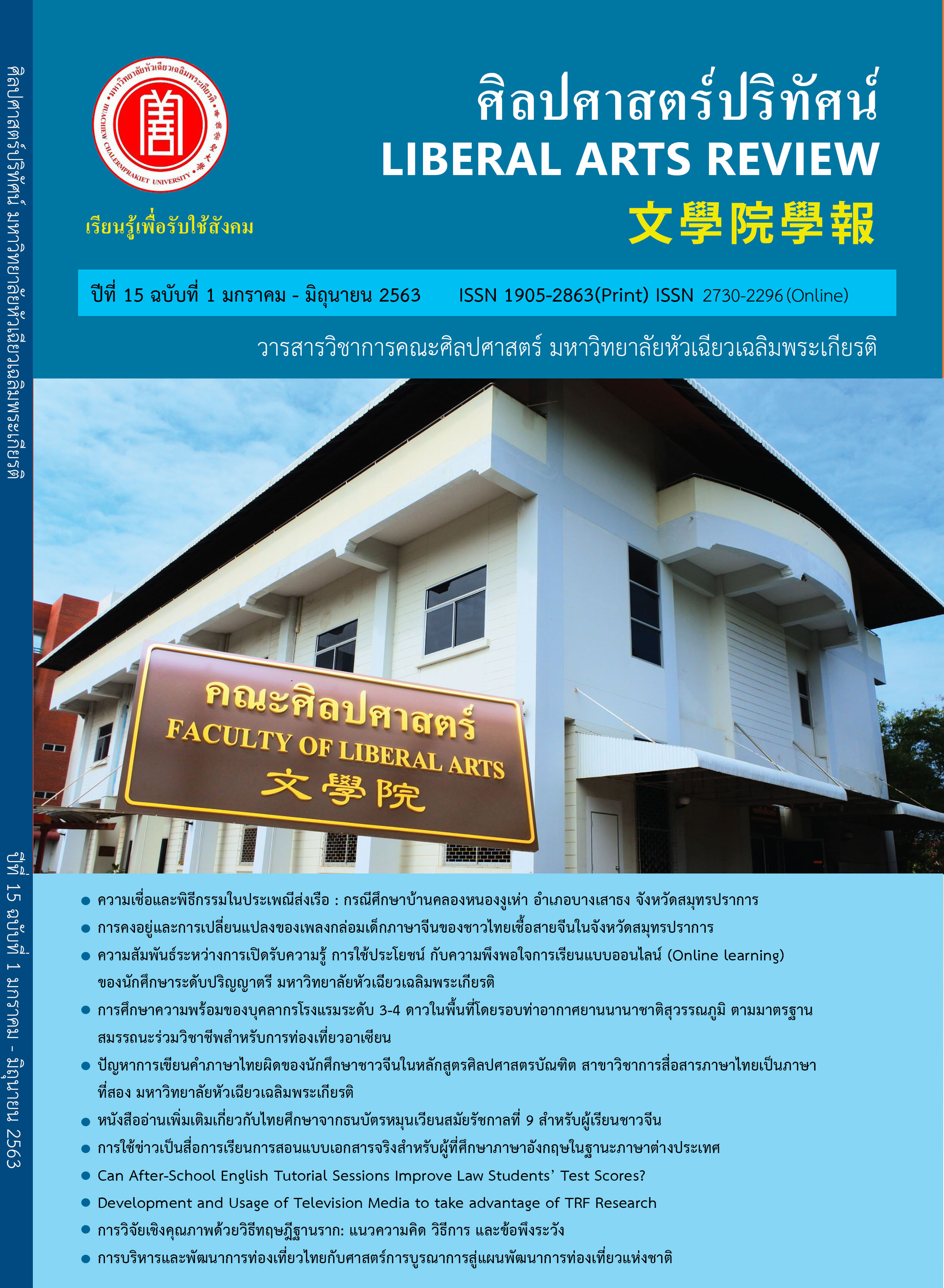Using news articles as authentic materials for EFL students
Keywords:
news articles, authentic materials, EFLAbstract
English language is considered as an essential part of worldwide communication. In the same regard, news media are accepted as an essential tool for global citizens to keep pace with current situations and worldwide issues. Integrating news articles into English classrooms is widely suggested as these journalistic items can develop students’ linguistic competence and expand their knowledge about the real world, which is important for EFL students who have limited opportunities to practice the target language or experience foreign cultures outside classrooms. By using news items in classrooms, the language learning will become more interesting and motivating because these materials include a wide variety of content and text types. However, authentic materials including news articles are claimed by some linguistic studies to contain difficult vocabulary and complicated grammatical structures which may confuse and discourage students from learning the language, especially those with low linguistic proficiency. To shed light on this issue, this paper will demonstrate benefits and challenges of using news articles in EFL context as well as discuss how to use these journalistic materials in classrooms for the highest achievement of language learning.
References
2. Abu-Al-Sha'r, A. (2009). Effect of Reading On-line Local Newspapers Headlines on Developing University Students’ Reading Skills in English. THE JOURNAL OF ASIA TEFL, 6(4), 87-108.
3. Ahellal, M. (1990). Using authentic materials in the classroom: theoretical assumptions and practical considerations. English Teaching Forum, 28(2), 37-39.
4. Akdemir, A. S., Barin, M. & Demiroz, H. (2012). Broadsheet English: teaching speaking through newspaper article. Procedia - Social and Behavioral Sciences, 46, 3967 – 3971.
5. Alina, B. & Lavinia, N. (2018). The Advantages of Authentic Materials in the ESP/ EFL Classroom: Newspapers. Ovidius University Annals, Economic Sciences Series, 18(1), 145-151. Retrieved from http://stec.univ-ovidius.ro/html/anale/RO/wp-content/uploads/2018/08/5-2.pdf
6. Bermejo, J. I. (2000). Teaching EFL/ESL Students How to Read Time and Newsweek. Internet TESL Journal, 6(7). Retrieved from: http://iteslj.org/Techniques/Bermejo-TimeNewsweek.html
7. Brown, I. (1999). Internet treasure hunts - A treasure of an activity for students learning English. The Internet TESL Journal, 5(3). Retrieved from: http://iteslj.org/Lessons/Brown-TreasureHunts.html
8. Clanfield, L. & Foord, D. (2011). Teaching materials: using newspapers in the classroom1
Retrieved from: http://www.onestopenglish.com/methodology/teaching-articles/teaching-materials/teaching-materials-using-newspapers-in-the-classroom-1/146510.article
9. Dass, L. (1989). A Case for Using Newspapers in the Teaching and Learning of English as a Second Language. The English Teacher, 18. Retrieved from: http://cc.bingj.com/cache.aspx?q=Lucille+Dass%2c+Maktab+Perguruan&d=4586230579398261&mkt=en-WW&setlang=th-TH&w=PAUB4yWbBT8lk8tfWMDQIHcTRBy_4H4s
10. Farmer. J. A. (2008). How to Effectively Use News Articles in the EFL Classroom. Internet TESL Journal, 14(12). Retrieved from: http://iteslj.org/Techniques/Farmer-News.html
11. Kilickaya, F. (2004). Authentic materials and culture content in EFL classrooms. The Internet ELT Journal, 10(7). Retrieved from http://iteslj.org/Techniques/Kilickaya-AutenticMaterial.html
12. Kiliç, Z. V., & Ilter, B. G. (2015). The effect of authentic materials on 12th grade students’ attitudes in EFL Classes. International Association of Research in Foreign Language Education and Applied Linguistics ELT Research Journal, 4(1), 2-15. Retrieved from https://www.academia.edu/37078637/The_effect_of_authentic_materials_on_12th_grade_students_attitudes_in_EFL_Classes
13. Krajka, J. (2000). Some possibilities for using on-line newspapers in the ESL classroom. The Internet TESL Journal, 6(4). Retrieved from http://iteslj.org/Techniques/Krajka-OnlineNews.html
14. Manasrah, M. A. & Al-Khawaldeh, K. (2014). The Effect of Using Journalistic Texts on the Development of Vocabulary of English as a Foreign Language for University Students. International Journal of Humanities and Social Science, 4(11). 131-135. Retrieved from http://www.ijhssnet.com/journals/Vol_4_No_11_1_September_2014/13.pdf
15. Mittal, R. (2014). Role of Newspaper in English Language Learning. International Journal of Research (IJR), 1(6). Retrieved from: http://citeseerx.ist.psu.edu/viewdoc/download?doi=10.1.1.680.6439&rep=rep1&type=pdf
16. Moglen, D. (2014). Tuning In: Using the News for a Content-Based ESL Class. CATESOL Journal, 26(1), 29-36.
17. Pan, Y. (2014). Adapting English Newspapers to Develop Language Proficiency in Low-Level EFL Learners. English Linguistics Research (ELR), 3(1). 66-71.
18. Pho-Klang, K. (2018). A Study of Undergraduate Students’ Attitudes toward English Authentic Teaching Materials. Liberal Arts Review. 14(1), 1-11.
19. Radhika, Ch. & Rajeswari, Ch. (2012). Role of Newspapers in English Language Teaching Language. ELT Weekly. 4(41). Retrieved from
http://eltweekly.com/2012/10/vol-4-issue-41-research-paper-role-of-newspapers-in-english-language-teaching-by-ch-radhika/
20. Rahmasari, B. S. (2013). Using Newspapers as Learning Media to Teach Reading Skills. English Teaching Journal: A Journal of English Literature, Language and Education. 1(1). Retrieved http://e-journal.unipma.ac.id/index.php/ETJ/article/view/714/646
21. Shu-Chin, S. (2008). Attitude of students and instructors toward authentic materials in selected adult TESL programs. Retrieved from http://citeseerx.ist.psu.edu/viewdoc/download?doi=10.1.1.539.8035&rep=rep1&type=pdf
22. Tafida, A. G., & Dalhatu, B. M. (2014). Using newspapers in teaching English as a second language. Journal of Educational Research and Reviews, 2(5), 61-65.
23. Tanasavate, K., & Chinwonno, A. (2013). A study of Thai EFL learners' and teachers' Use of authentic materials. An Online Journal of Education, 8(2), 178-190. Retrieved from https://portal.edu.chula.ac.th/pub/tefl/images/phocadownload/OJED2014/Kuliga%20Tanasavate_2556.pdf
24. Thomas, C. (2014). Meeting EFL learners halfway by using locally relevant authentic materials. English Teaching Forum, 52(3), 14-23.
25. Vavla, L. (2009). Benefits of Using Newspapers, Magazines and Books in Classroom. LCPJ Publishing. 2(2), 12-17.
26. Yarmakeev, I. E., Abdrafikova, A. R., Pimenova, T., & Nigmatullina, A. F. (2016). Learning to read newspapers in EFL class, or neologisms in English newspaper texts. Journal of Language and Literature, 7(2). Retrieved from: https://www.researchgate.net/publication/311606103_Learning_to_read_newspapers_in_efl_class_or_neologisms_in_english_newspaper_texts
Downloads
Published
How to Cite
Issue
Section
License
บทความที่ได้รับการตีพิมพ์เป็นลิขสิทธิ์ของวารสารศิลปศาสตร์วิชาการและวิจัย
ข้อความที่ปรากฏในบทความแต่ละเรื่องในวารสารวิชาการเล่มนี้เป็นความคิดเห็นส่วนตัวของผู้เขียนแต่ละท่านไม่เกี่ยวข้องกับมหาวิทยาลัยหัวเฉียวเฉลิมพระเกียรติ และคณาจารย์ท่านอื่นๆ ในมหาวิทยาลัยฯ แต่อย่างใด ความรับผิดชอบองค์ประกอบทั้งหมดของบทความแต่ละเรื่องเป็นของผู้เขียนแต่ละท่าน หากมีความผิดพลาดใดๆ ผู้เขียนแต่ละท่านจะรับผิดชอบบทความของตนเองแต่ผู้เดียว




